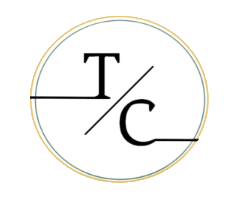What is a Purchase Allowance?
What is a Purchase Allowance?
A purchase allowance is a price reduction that a seller grants to a buyer after a sale. This reduction generally happens due to minor defects, late delivery, or other issues with the product.
Instead of returning the goods, the buyer keeps them at a discounted price, and the seller adjusts the invoice accordingly. This helps maintain customer relationships while avoiding the hassle of returns.
Think of it like ordering a pizza and getting a partial refund because it arrived cold. You still get to eat it but at a lower cost.
What is an Example of a Purchase Allowance?
Let’s walk through an example to understand better how a purchase allowance works:
Say you run a small electronics retail business. You order 50 portable Bluetooth speakers from a supplier, each priced at $60. The total cost of the order is $3,000.
Once the shipment arrives, you inspect the items and discover that 8 of the speakers have slight cosmetic dents on their casings. They still function perfectly, and you decide they’re sellable—maybe as discounted items or in-store specials.

Instead of returning the damaged speakers, you reach out to the supplier. You both agree on a purchase allowance of $10 per damaged unit. That amounts to an $80 credit ($10 × 8 speakers).
The supplier reduces your payable amount rather than issuing a refund. So, instead of paying the full $3,000, you’ll now owe $2,920 after applying the $80 purchase allowance.
From an accounting standpoint, the transaction would be recorded like this:
Initial entry when inventory is received:
- Debit Inventory $3,000
- Credit Accounts Payable $3,000
Then, once the allowance is granted:
- Debit Purchase Allowances $80
- Credit Accounts Payable $80
This adjustment lowers your liability and reduces the inventory cost, which in turn increases your gross margin slightly when you sell the affected speakers. It’s a practical way to manage small defects without disrupting business operations.
Short on time? Watch a quick explainer video instead 👇
FAQs
What is the difference between a purchase discount and a purchase allowance?
A purchase discount is a reduction in the price you pay if you settle your invoice early. For example, a supplier might offer you 2% off if you pay within 10 days. It’s an incentive to pay faster.
On the other hand, a purchase allowance is a price reduction granted after delivery, typically due to issues like damaged or defective goods. Unlike a discount, it doesn’t require early payment—it’s compensation for accepting flawed items without returning them.
How do you record a purchase allowance?
To record a purchase allowance, you reduce the amount owed to the supplier and adjust your inventory or expense account accordingly. Here’s how it typically looks in a journal entry:
- Debit Purchase Allowances (or Inventory if you’re adjusting asset value)
- Credit Accounts Payable
What is the primary difference between a purchase return and a purchase allowance?
The main difference is in what happens to the goods:
- A purchase return means the buyer physically sends the items back to the supplier and receives a refund or credit.
- A purchase allowance means the buyer keeps the goods but gets a partial refund or price adjustment, usually due to minor defects or quality issues.

